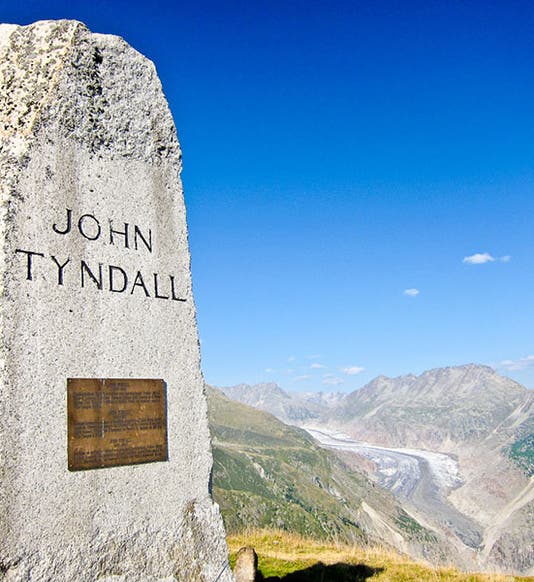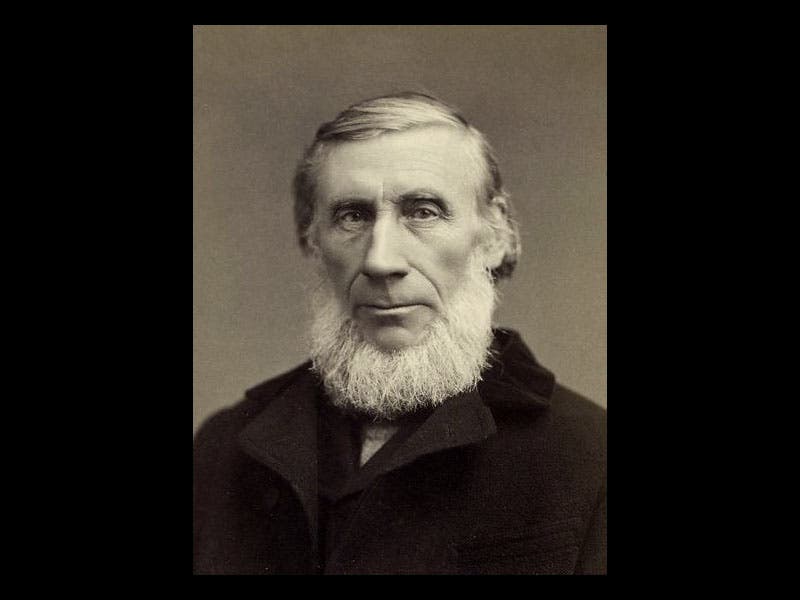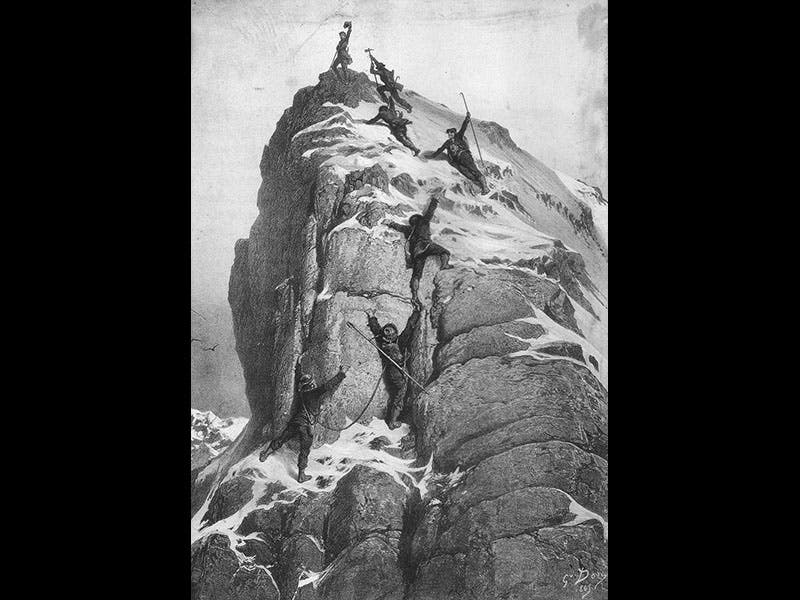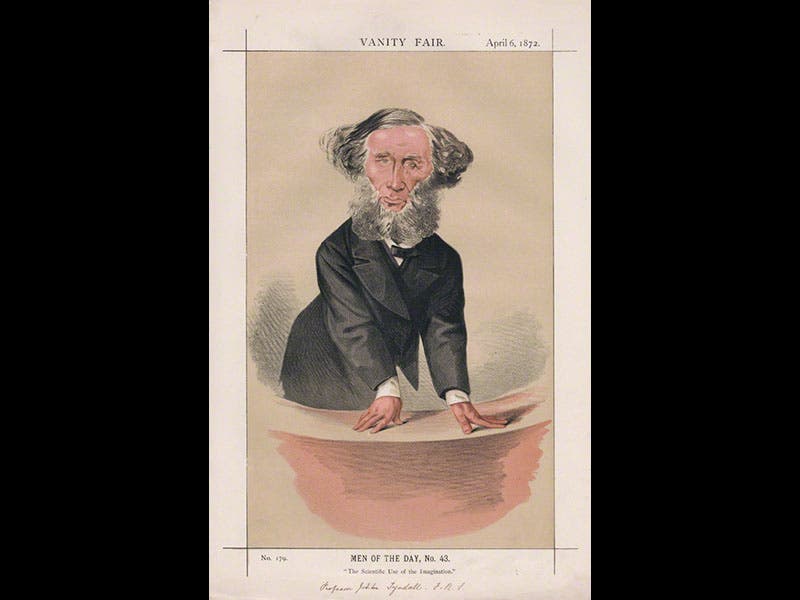Scientist of the Day - John Tyndall
John Tyndall, an Irish physicist, was born Aug. 2, 1820 (so say most of the sources, although there is no record for the year of birth). Tyndall was one of the more colorful Victorian scientists; in addition to pursuing experiments on the nature of heat and light, he was an ardent mountain climber and a member of the British Alpine Club. He climbed the Weisshorn in the Alps (the first to do so) and the Matterhorn, and after ascending Mont Blanc in 1859, he lit several candles at the summit to measure their weight loss in an hour, and later did the same experiment back in his hotel, to compare the rate of burning. When one looks at a modern photo of the Weisshorn (third image), and then an engraving of a British alpine party ascending the Matterhorn in 1865 (fourth image), one wonders how anyone survived. Tyndall also wed a 30-year old lass when he was 55, and they shared 18 years of apparently happily married life.
Tyndall is often remembered for the Presidential Address he gave in Belfast at the 1874 meeting of the British Association for the Advancement of Science. In his talk, Tyndall directly attacked the idea that religion can provide us any information about the physical world. Tyndall argued that science is the source of all knowledge about the world, and he used Darwinian evolution as his primary example of what we can learn if we leave religion out of the picture and simply rely on observation and experiment to guide us. His address was widely reported in the popular press, and gave rise to considerable controversy, since most of his fellow physicists, such as James Clerk Maxwell and William Thomson (later Lord Kelvin) were quite religious.
Tyndall also believed strongly that scientists have a duty to explain their work to the public, and he was the author of a number of popular books on heat, sound, and light. We have multiple editions of most of these works in the History of Science Collection, as well as a printing of his 1874 Belfast address. His best-known portrait (second image) is of interest because, not only was he as craggy as some of the mountains he ascended, he also greatly resembled the fire-and-brimstone preacher that he often scorned. Tyndall was also the subject of a witty Vanity Fair caricature in 1872 (fifth image)
There is a memorial to Tyndall on the flank of the Aletsch glacier in the Bernese Alps (first image); it is everything a commemorative stone ought to be.
Dr. William B. Ashworth, Jr., Consultant for the History of Science, Linda Hall Library and Associate Professor, Department of History, University of Missouri-Kansas City. Comments or corrections are welcome; please direct to ashworthw@umkc.edu.











